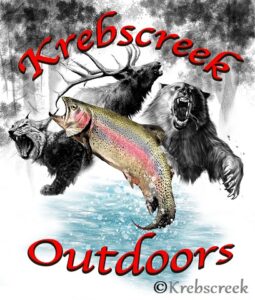The North American river otter is a semi-aquatic mammal that is a member of the Lutrinae subfamily of the “weasel family” Mustelidae family. The Mustelidae family includes weasels, wolverines, badgers, martens, mink, and fishers. Its scientific name is Lontra Canadensis. This is a recent change. Its former classification was Lutra Canadensis.
Like American mink, river otters are considered semi-aquatic because they spend much of their time on land. This differs from fully aquatic sea otters. However, North American river otters are specifically adapted to living, hunting, and foraging in the water. Consequently, their range extends along the coasts and waterways of North America.
North American River Otter Characteristics
A North American river otter is not as large as a sea otter. Nevertheless, these animals are one of the larger members of the Mustelidae family. Their weight ranges from 11.0 to 33 lbs. (5 to 15 kg.) In length, they are from 26 to 42 inches (.26 to 1.06 meters), including their tail at maturity. They display moderate sexual dimorphism, with mature males roughly 5% larger than mature females. See
Their body construction and appearance are similar to those of other members of the Mustelidae family, such as weasels or fishers. They are long-bodied and have short legs. They are dark brown over their backs and sides and golden brown to grey on their undersides.
These animals are well adapted for life in the water. Their bodies are slender and proportionately long in relation to their mass. Their thick tapered tail accounts for up to 40% of their total length. Although they’re not entirely aquatic, North American river otters spend much of their lives in the water hunting and foraging. Ergo, they’re excellent swimmers with many adaptations that suit them to a semi-aquatic life.
Although they’re at their best in the water, these animals travel well on dry land. They sometimes travel 10 to 18 miles over dry land for food.
North American River Otter Adaptations
- Fur coat: First and foremost, North American river otters have a thick, water-repellent coat of fur that keeps them warm and comfortable when swimming in cold water. They have the thickest fur of any North American mammal at around 850,000 hairs per square inch. It consists of a fine, dense undercoat covered with coarse guard hairs.
- Body constructed for life in the water: They have small, rounded heads roughly the same circumference as their necks, making them more streamlined. Next, they have long, slender bodies that make them constructed to knife effortlessly through the water. Their legs are short in proportion to their size. They have webbed feet and muscular, long-tapered tails to help them swim faster. They swim at speeds up to 7 miles per hour.
- Claws: They have sharp, non-retractable claws that they use to hold onto slippery fish.
- Thick pads on their hind feet: While talking about their feet, I’ll mention that they have thick soles on their hind feet that give them extra traction to climb up slippery slopes.
- Vibrissae: Their nose and mouth are blunt and proportionately broad. They have long, stiff, yet sensitive whiskers on their faces or vibrissae, which they use to locate prey and other food items, such as aquatic plants, in murky water.
- Nictitating membrane: These animals have nictitating membranes or transparent third eyelids that cover their eyes when swimming and allow them to see.
- Specialized ears and nostrils: They have small ears and nostrils that can be closed underwater. When they’re submerged, they need to keep water from leaking in.
- Specialized teeth: North American river otters have sharp carnassial teeth like all mustelids use to bite and tear flesh. Additionally, they have large, reinforced molars that enable them to crush hard objects such as mollusk shells. Source
- Ability to dive and hold their breath: North American river otters can hold their breath and stay underwater for up to 8 minutes. Additionally, they can dive to a depth of 60 feet (18.29 meters).
North American River Otter Range
The North American river otter lives in Alaska and every Canadian province except Prince Edward Island. It is also found throughout most of the continental United States, from Washington State in the Northwest to the southern tip of Florida in the Southeast. However, its range excludes extremely arid areas, such as the desert or the tundra.
Historically, North American river otters lived in Mexico, on the Colorado and Rio Grande River deltas. They have been expatriated from their former Mexican territory, though.
Due to habitat loss or degradation from water pollution and other factors, North American river otters are now expatriated or rare in Arizona, Nebraska, Kansas, New Mexico, North Dakota, South Dakota, Tennessee, and West Virginia.

North American River Otter Habitat
North American river otters live near aquatic habitats along rivers, lakes, streams, marshlands, or estuary ecosystems. They need easy access to water and an adequate food supply. They sometimes compete with American mink for the same prey base.
They make their dens in the abandoned burrows of other animals, such as beavers or hollow logs along the water’s edge. They will also take over abandoned beaver lodges.
Can River Otters Survive In The Ocean?
As their common name indicates, North American river otters are primarily freshwater mammals. However, they do go in salt water. They can and sometimes do live in estuary and coastal marine habitats. However, they cannot drink the salt water as sea otters do. They’re not biologically adapted to do so. Consequently, they need fresh water close by.
What Do North American River Otters Eat?
North American river otters are carnivores. Their favorite food is fish. However, they also eat crabs, crayfish, muscles, frogs, reptiles such as snakes or turtles, small mammals such as muskrats and sometimes beavers, birds and their eggs, aquatic invertebrates such as insects and nymphs, fruit, and occasionally aquatic plants.
Do River Otters Eat Ducks?
Yes, river otters eat ducks, especially ducklings. They also eat adult ducks when they can catch them. This becomes simpler for the otter when the duck is molting and cannot fly for 20 to 40 days.
How Much Do North American River Otters Eat?
These animals have a very high metabolism. Consequently, they need a lot of calories daily in proportion to their body weight. They eat 10% to 25% of their body weight each day. See
North American River Otter Predators
Due to the aquatic environment they spend much of their time in, these animals have few natural predators as long as they’re in the water. However, they occasionally fall prey to any large predators that hunt opportunistically and have a chance to catch one of them on land.
In the southeastern portion of their range, North American river otters are occasionally the prey of alligators and American crocodiles.
North American River Otter Behavior
North American river otters are playful animals. They’re enjoyable to watch as they slide down a bank into the water or chase and wrestle with one another. They use this playful behavior to strengthen social bonds and to learn survival skills.
They are high-energy animals and, thus, by necessity, spend a lot of time hunting for food. They can hold their breath underwater for up to eight minutes. Most of the time, they catch fish by keeping perfectly still until an unsuspecting one swims by, and then they suddenly snatch it up.
They communicate with chuckles, growls, whistles, and screams. They also use scent marking to lay the boundaries of their territory by applying musk from their anal glands to streamside vegetation within their home range. If you smell a musky odor in your stream or lakeside, there’s a good chance that an otter has been there before you.
Where Do North American River Otters Sleep?
Like all freshwater otters, they sleep on land, either on the ground or in their den. This is different from sea otters, which sleep in the water as they float on their backs.
Do North American River Otters Hibernate?
North American river otters don’t hibernate in the winter but stay as active hunting and foraging for food as in the summer. In the wintertime, you will be more likely to see otters out and about in daylight. They switch from being primarily nocturnal to being diurnal principally in the winter.
North American river otters don’t migrate in the winter unless their food becomes scarce. They can travel up to 26 miles overland in a day, though, if necessary. This is how they differ from sea otters, which are awkward on land. See
What Do North American River Otters Do In The Winter?
First of all, they need to be able to continue to hunt for fish and other aquatic animals. They can’t hunt if they can’t get in the water. They solve this problem by searching places where the stream current has kept the channel free of ice. They’re also experts at locating places where the ice is naturally thin from warm spring upwellings or places where downed trees or other vegetation is in the water. They also utilize abandoned beaver lodges and burrows with entrances below the water line. One last technique they use is to keep a hole open as the ice around it builds up each day.

North American River Otter Life Cycle
- Breeding season: North American river otters are polygynous. Males often breed with multiple females, and the mating season lasts from December to April.
- Gestation: Their gestation lasts for two months. However, these animals have delayed implantation. Due to delayed implantation of the fertilized egg into the uterus, the actual birth can take up to a year from fertilization.
- Dening: Pregnant River otter females search out dens to give birth in some time in the late winter or early spring. Generally, they’ll convert an old beaver burrow or lodge over to their use. They don’t build their own dens.
- Birth: North American river otter females give birth to 1 to 5 pups. Births occur sometime between February and April.
- Development in the den: When they’re born, North American river otter pups are fully furred but still have their eyes closed. They open their eyes after they’re a little over a month old.
- Introduction to water: They emerge from the den, and their mother introduces them to water. They learn to swim when they are about two months old. Water training is easy for them as they are natural swimmers.
- Weaning: They begin to eat food other than their mother’s milk at 9 to 10 weeks, and their mother weans them when they are around three months old.
- Independence: North American river otter pups can take care of themselves by the fall of the year they are born. However, they generally remain with the family group until the following spring.
- Reproductive age: Both sexes of North American River otters reach sexual maturity at 2 to three years of age.
- Life Expectancy: North American river otters live 8 to 9 years in the wild. However, in captivity, they can live for 21 to 25 years.
Final Thoughts
Watching a playful North American river otter in his native environment can be an unforgettable experience. Look for signs of their presence the next time you’re in the field.
Recent Posts
The only venomous snakes in Washington State are Northern Pacific Rattlesnakes. The Northern Pacific Rattlesnake (Crotalus oreganus oreganus) is a sub-species of the Western Rattlesnake. Anyone...
Skunks are not classified as true hibernators. But they go into a state of torpor when the weather gets cold. Skunks are light sleep hibernators, along with opossums, bears, and raccoons. ...

